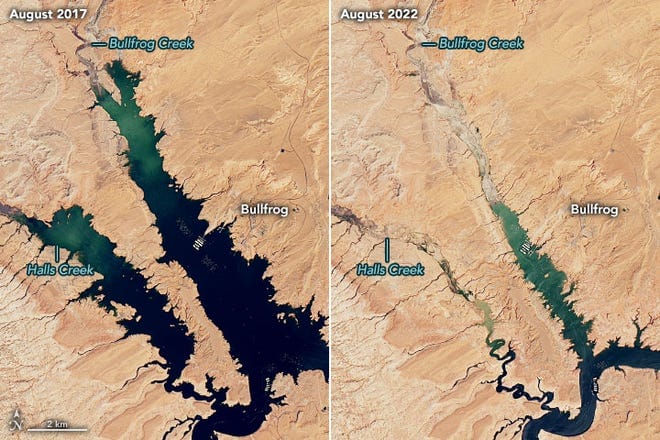These photos released by NASA’s Earth Observatory shows how dramatically water levels have fallen at Lake Powell.
Opinion: The battle lines aren’t new, but the level of detail is in two plans to stabilize the Colorado River. That’s a win for all of us.
By Joanna Allhands || The Arizona Republic
California is the odd state out on a plan to keep Lake Powell and Lake Mead on life support, and right now, all we want to focus on is the conflict.
Which is understandable.
The fight that’s been brewing for months between California and the six other Colorado River basin states is a thorny one about who should shoulder the burden for saving the lakes. It’s a fundamental question that plenty of folks expect will end in court.
But let me offer a contrarian view:
Maybe it’s a good thing that we now have competing proposals from these two factions.
Maybe – just maybe – this will help us in the long run.
Why 2 plans to prop up the Colorado River?
The feds challenged the seven basin states last summer to figure out how they would trim an additional 2 to 4 million acre-feet of water use this year.
This isn’t just as an academic exercise. We need that extra water in the lakes to slow the steady march toward “dead pool,” the point where water no longer flows past the dams to users downstream.
The states have never been able to come to a deal voluntarily – mostly, because this is a lot of water to figure out how to stop using this quickly. It’s going to be painful.
That’s why the federal Bureau of Reclamation, which operates the lakes, is now studying options to mandate action.
And that’s why these two proposals exist.
Federal officials asked states to offer additional ideas by Feb. 1 so they would have enough time to model their impacts in this study, called a supplemental environmental impact statement, by the spring draft deadline.








